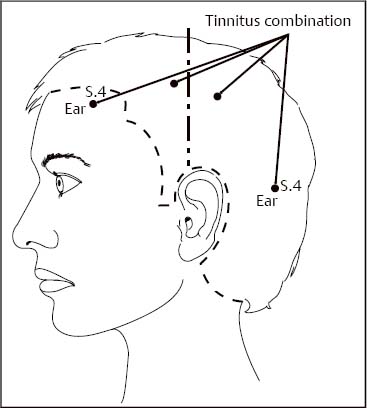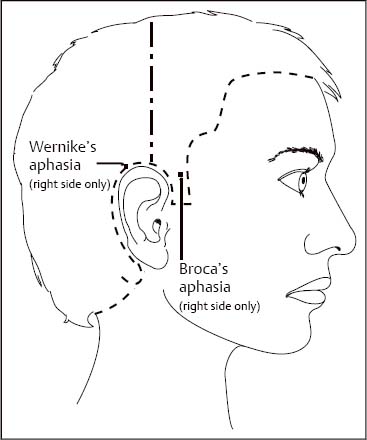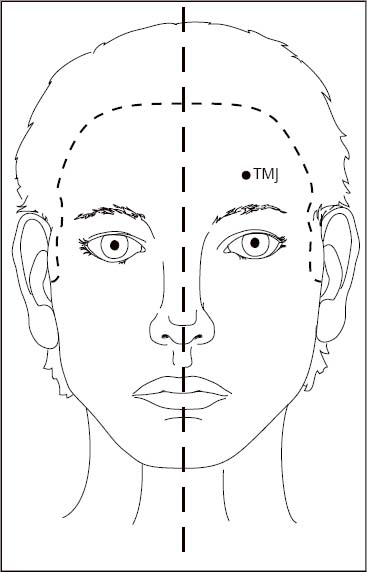8
YNSA Special Points
The Yellow Emperor asked Ch’i Po: “When the wind has harmed someone, it causes in some cases cold and heat…These illnesses are in each case different and [for this reason] carry different names. In some cases [the wind] penetrates deep into the body, to the five depots or the six palaces. The cause is unknown to me. I should therefore like to hear your explanations on this subject.”
Ch’i Po: “When wind-influence is stored in the skin, it is unable to penetrate into the inner region [of the body] or to escape outside. The wind loves movement and makes its appearance in numerous variations. If wind-influence strikes the transportation [holes] of the five depots and six palaces, this also causes winds of the depots and palaces. Consequently, the wind is responsible for hundreds of different illnesses. Yet [in every case the illness is due] to the presence of wind-influences.”1—Huang-di Nei-jing Su-wen
YNSA Special Points
There is a group of points that are related to Basic and Ypsilon points and are used for very specific medical diagnoses. They are tinnitus, aphasia, temporomandibular joint (TMJ) dysfunction, and female hormone dysfunction.
Tinnitus Points
Anatomical Correlate
Ipsilateral point: Tinnitus points consist of all four points taken together on the left and on the right. The four points used together are made up S-4 Yin of YIN and Yin of YANG plus two additional points between these two S-4 points.
Location
Yin of YIN: S-4 is located 0.7 cun below the hairline and 0.25 cun medial to the YIN C-1 line, see Figure 8–1. A little hill is palpated.
Yin of YANG: S-4 is located between the S-1 and S-2 points, medial to the YANG C-1 line. A little hill is palpated.
Yang of YIN: The YIN tinnitus point is located posterior to the Yin of YIN C-2 line (toes) ~0.5 cun anterior to a coronal line taken from the root of the pinna of the ear to the other ear, along an arc connecting the two S-4 points. It is not a little hill, but more of a depression.

Figure 8–1 Tinnitus combination points.
Yang of YANG: The YANG tinnitus point is located ~1 cun posterior to a coronal line taken from the root of the pinna of one ear to the other ear, along an arc connecting the two S-4 points. It is not a little hill, but more of a depression. The point is ~3mmin length.
Technique
Palpate each Tinnitus point and piqué subcutaneously at a 70 degree angle each point beginning at Yang of YANG and moving in order anteriorly ending with Yin of YIN.
Purpose and Use
The tinnitus points are used for vertigo, Ménière disease, and tinnitus.
Broca’s Aphasia Point
Anatomical Correlate
Unilateral point: Broca’s aphasia point is located over the temporal bone next to the right Yin of YIN KI Ypsilon point.
Location
It is located next to the KI Ypsilon point on the right, 1 to 3mm anterior and inferior slightly down the KI point small hill of the temporal bone, see Figure 8–2. The aphasia point is about one-third of the way down the little hill of right-sided Yin of YIN KI point.
Technique
Palpate the right Yin of YIN KI Ypsilon point, move 1 to 3mm anterior and inferior, sliding down the hill of the KI point, one-third of the way down. Piqué the point at a 70 degree angle.
Purpose and Use
The Broca’s aphasia point is used for motor aphasia. The type of aphasia that is not fluent, slow, and laborious effort, with fair to good word and reading comprehension but impaired writing and repetition.

Figure 8–2 Aphasia points.
Wernicke’s Aphasia Point
Anatomical Correlate
Unilateral point: Wernicke’s aphasia point is located over the temporal bone next to the right Yang of YIN ST and SP Ypsilon points.
Location
It is located next to and between the ST and SP Ypsilon points on the right, see again Figure 8–2.
Technique
Palpate the right Yin of YANG SP, move superior 2mm, and palpate for a small hill.
Purpose and Use
Wernicke’s aphasia point is used for sensory aphasia. The type of aphasia with fluent, voluble speech that may be totally incomprehensible, with impaired word and reading comprehension, writing, and naming.
Temporomandibular Joint Point
Anatomical Correlate
Ipsilateral point: The TMJ point is located about halfway between the S-3 and S-4 points in both YIN and YANG.
Location
The TMJ point is on a little hill that is located on the frontal in YIN and occiput in YANG between these two points S-3 and S-4, see Figure 8–3.
Technique
Palpate S-3, move superior and laterally about one-half to two-thirds of the way toward S-4. Piqué at a 70 degree angle over the point or at a 20 degree angle to run the needle 10 to 15mm subcutaneously between the S-3 and S-4 points.

Figure 8–3 Temporomandibular joint point (Feely point).
Purpose and Use
TMJ dysfunction, dental, and facial pain.
Female Hormonal Z-S Point
Anatomical Correlate
Bilateral point: The Z-S point is located in the center of the following four points: lung, pericardium on the top, small intestine, and stomach on the bottom.
Location
The location is between these four points.
Technique
Palpate the Ypsilon lung point and move medially half way to the pericardium point and then move half way down to the second level (horizontal line) of points, that being small intestine and stomach. Piqué at 90 degree angle on the point. The Z-S point was discovered by Dorothea Zeise-Suess, M.D. in a retrospective clinical study of 271 women with hypermenorrhea, menometrorrhagia, secondary amenorrhea, and climacteric syndrome; 99% of the patients improved.2
Stay updated, free articles. Join our Telegram channel

Full access? Get Clinical Tree









